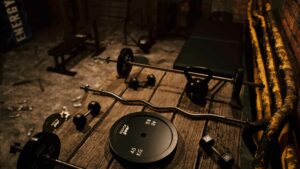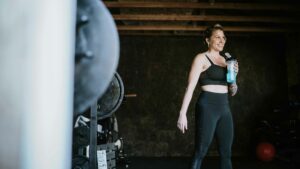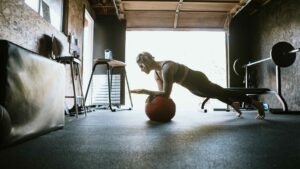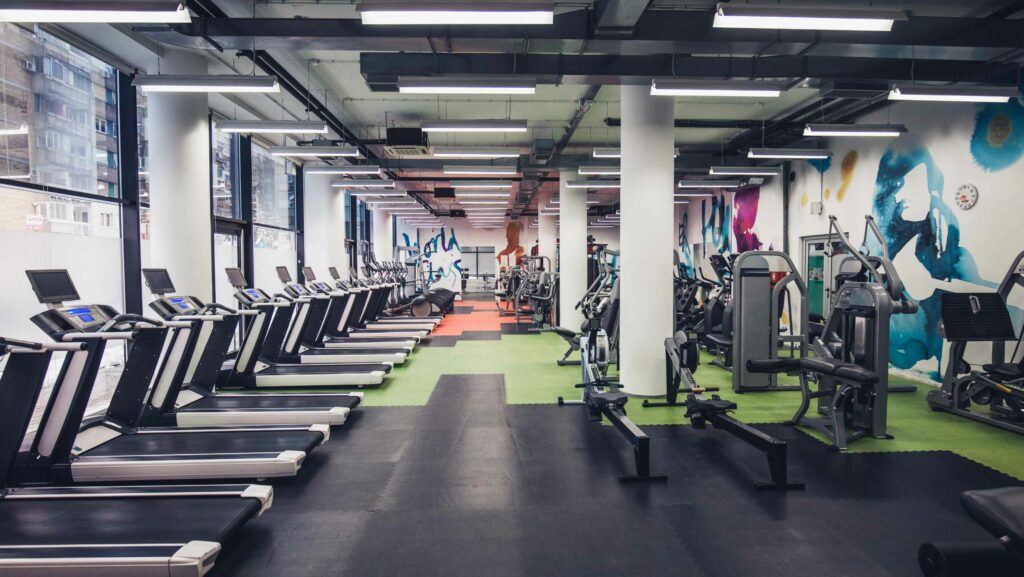Transforming a garage into a personal gym has become a popular trend for fitness enthusiasts looking to tailor their workout environments. With the right DIY garage gym ideas, anyone can create a space that not only meets their fitness needs but also inspires daily workouts. The key lies in maximizing the limited space available without compromising on the essential equipment.
From selecting the right flooring to optimize safety and performance to choosing equipment that fits various workout routines, setting up a home gym involves thoughtful planning. Moreover, creative storage solutions and smart use of space can make even the most compact garage feel like a professional gym. This approach not only saves money but also adds a personal touch to the fitness journey, making each workout session more enjoyable and effective.
DIY Garage Gym Ideas
 Building a garage gym can significantly cut expenses related to gym memberships. The average gym membership costs between $40 and $50 per month, summing up to $480 to $600 annually. By contrast, investing in a basic home gym setup—a bench, weights, and a barbell—could cost as little as $500, a one-time expense that pays for itself within a year. Additionally, high-quality equipment purchased once can last for several years, reducing the need for costly renewals and subscriptions.
Building a garage gym can significantly cut expenses related to gym memberships. The average gym membership costs between $40 and $50 per month, summing up to $480 to $600 annually. By contrast, investing in a basic home gym setup—a bench, weights, and a barbell—could cost as little as $500, a one-time expense that pays for itself within a year. Additionally, high-quality equipment purchased once can last for several years, reducing the need for costly renewals and subscriptions.
A garage gym offers unparalleled convenience and accessibility for fitness enthusiasts. Workouts fit seamlessly into one’s daily schedule because the gym is located right at home. This setup eliminates travel time, making it easier to maintain a consistent workout regimen. Moreover, the garage provides a private space where one can exercise at any hour without the hassles of waiting for equipment or adjusting to peak times at a public gym.
Planning Your Garage Gym Space
 Assessing the space and layout forms the foundation of planning a garage gym. First, measure the available space to understand what can fit without compromising on movement or functionality. Most home gyms require a minimum of 20-50 square feet for basic equipment like a treadmill or a set-up bench, but more complex installations may need additional space. It’s vital to consider not only the footprint of each piece of equipment but also the necessary clearance for safe usage. Designing a layout involves placing larger machines along the walls to maximize central floor space for free weights and stretching areas.
Assessing the space and layout forms the foundation of planning a garage gym. First, measure the available space to understand what can fit without compromising on movement or functionality. Most home gyms require a minimum of 20-50 square feet for basic equipment like a treadmill or a set-up bench, but more complex installations may need additional space. It’s vital to consider not only the footprint of each piece of equipment but also the necessary clearance for safe usage. Designing a layout involves placing larger machines along the walls to maximize central floor space for free weights and stretching areas.
Flooring and Environmental Considerations
Choosing the right flooring is critical for both safety and equipment longevity. Concrete, the typical garage flooring, isn’t suitable for heavy gym activities as it can damage equipment and isn’t safe for high-impact exercises. Installing rubber mats or interlocking foam tiles can protect both your equipment and flooring, while also providing shock absorption. Environmental considerations include adequate ventilation, which is crucial to manage air quality and temperature. Incorporating fans or an air conditioning unit can maintain comfort during intense workouts, and proper insulation can help regulate the garage’s temperature year-round.
Essential Equipment for Your DIY Garage Gym
 Selecting the appropriate equipment is paramount for setting up a DIY garage gym. The equipment you choose depends on your fitness goals, available space, and budget constraints. For strength training, a multifunctional power rack is essential, accommodating exercises like squats, bench presses, and pull-ups. Quality Olympic weights and a barbell are fundamental for weight training, whereas adjustable dumbbells offer versatility without occupying much space.
Selecting the appropriate equipment is paramount for setting up a DIY garage gym. The equipment you choose depends on your fitness goals, available space, and budget constraints. For strength training, a multifunctional power rack is essential, accommodating exercises like squats, bench presses, and pull-ups. Quality Olympic weights and a barbell are fundamental for weight training, whereas adjustable dumbbells offer versatility without occupying much space.
Cardio enthusiasts should consider space-efficient options like jump ropes or foldable treadmills. For those focusing on flexibility and core strength, a set of resistance bands and a good quality yoga mat are advisable. Additionally, a kettlebell set provides a compact solution for both strength and cardiovascular workouts. To ensure a comprehensive workout regime, including a balance of equipment that supports a variety of exercises is recommended if space permits.
Storage Solutions
Proper storage solutions can streamline a garage gym, creating a more functional and organized space. Employing heavy-duty shelving units along the walls saves floor space and keeps weights and accessories off the ground. Wall-mounted racks for barbells and weight plates not only enhance safety but also enhance accessibility. Likewise, using pegboards for hanging smaller items like skipping ropes, resistance bands, and gloves can keep them within easy reach.

